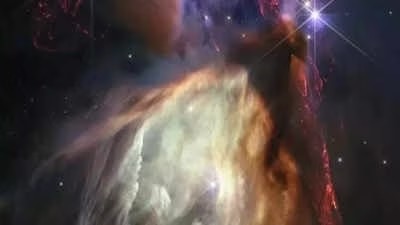
Ghost Particle' Detector

26.10.2023
Ghost Particle' Detector , Daily Current Affairs , RACE IAS : Best IAS Coaching in Lucknow
|
For Prelims: Trident, Critical Points, Neutrino, Why is neutrino detection important, India based neutrino observatory mission, Aim of INO, Institutions involved in INO:: |
Why in the news?
China will build the world's largest underwater 'ghost particle' detector.
Important points
- China is undertaking a major scientific effort by building the world's largest 'ghost particle' detector beneath the surface of the western Pacific Ocean, named the Tropical Deep-Sea Neutrino Telescope (Trident) or "Ocean Bell" in Chinese.
- According to a report, this unprecedented project, scheduled to be completed in 2030, aims to capture elusive neutrinos as they briefly become detectable in the deep ocean depths, providing valuable information about their cosmic origins.
- A pilot project for Trident is scheduled to begin in 2026, with completion expected in the 2030s.
About Trident
- Trident, anchored 11,500 feet (3,500 m) below the ocean surface, uses Earth as a shield to detect neutrinos entering from the opposite side of the planet.
- According to scientist Xu Donglian, because Trident is near the equator, it can receive neutrinos coming from all directions along with the Earth's rotation, making it possible to make observations across the entire sky without any blind spots.
- This ambitious effort will use more than 24,000 optical sensors distributed across 1,211 wires rising above sea level, each measuring 2,300 feet (700 meters) long.
- Arranged in a Penrose tiling pattern, the detector will span 2.5 miles (4 kilometers) in diameter and scan an impressive 1.7 cubic miles (7.5 cubic kilometers).
- In contrast, the current largest neutrino detector, IceCube in Antarctica, has an observation area of only 0.24 cubic miles (1 cubic km), making Trident significantly more sensitive and ready to make significant neutrino discoveries.
- Neutrinos are essential to understanding the origins of our universe. The creation of Trident is set to bring us one step closer to that knowledge.
What is neutrino
- Neutrinos, often called "ghost particles", are subatomic particles with almost zero mass and no electric charge.
- They pass through matter with minimal contact, making them extremely difficult to detect.
- Neutrinos were long thought to be massless, until scientists found evidence that their mass is very small.
- Neutrinos are one of the most abundant particles in the universe.
- Nuclear forces behave similarly with electrons and neutrinos.
- Neither of them participates in strong nuclear power, but both participate equally in weak nuclear power.
- Every time atomic nuclei come together (like in the Sun) or break apart (like in a nuclear reactor), they produce neutrinos.
How neutrino- ghost particle
- Neutrinos' weak charge and almost negligible mass make them extremely difficult for scientists to observe.
- They can only be seen when they interact with other particles.
- The rarity of interactions with other particles makes them almost impossible to track.
- That's why they are called ghost particles – the vast majority remain unknown.
Why is neutrino detection important
- Scientists don't really know where the massively abundant neutrino particles come from.
- Scientists think they may have played a role in the early universe, just after the Big Bang. But this is just a hypothesis, they have not been able to prove anything yet.
- It is believed that a better understanding of neutrinos will help solve many scientific mysteries – such as the origin of mysterious cosmic rays, which neutrinos are known to contain.
- Researchers hope that understanding the source of neutrinos will help them explain the origin of cosmic rays – something scientists have been trying to do for centuries.
India-based Neutrino Observatory Mission
- The Indian Neutrino Observatory (INO), approved in 2015, is a proposed particle physics research mega project.
- Its objective is to study neutrinos in a 1,200 meter deep cave.
- Neutrino detectors are often built underground to isolate them from cosmic rays and any other sources of background radiation from space.
INO aims to
- The first step will be to study so-called atmospheric neutrinos, produced by cosmic ray interactions in Earth's atmosphere.
- Both neutrinos and antineutrinos of different species (flavors) are produced here.
- There are several long-term options associated with the project. For example, researchers could use the INO project for future solar and supernova studies.
Institutions included in INO:
- INO is proposed to be operated by seven primary and 13 partner research institutes, led by:
- Tata Institute of Fundamental Research (TIFR) and
- Indian Institute of Mathematical Sciences (IIMSc).
- The project is jointly funded by the Department of Atomic Energy (DAE) and the Department of Science and Technology (DST).
place:
- To avoid the difficulty of identifying and separating signals generated by neutrinos from signals generated by other particles, the detector will be placed inside a mountain.
- Neutrinos will easily pass through the mountain, and reach the detector, while other particles will be filtered out by the mountain rock.
Source: Times of India